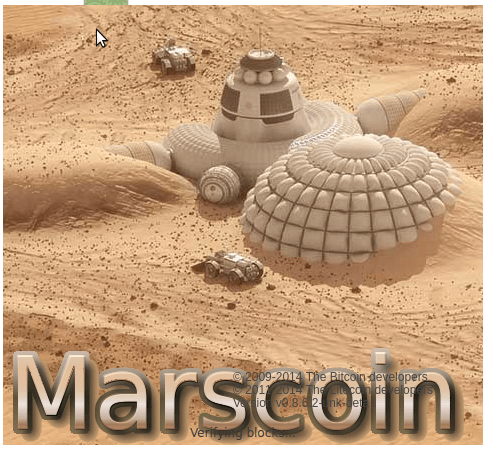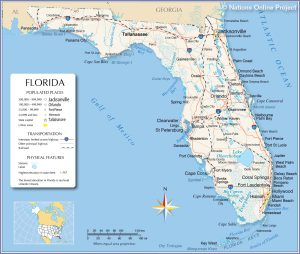Is Interplanetary Trade Worth It?
 We haven’t even put up a permanent settlement on another planet yet and already people are turning into a gaggle of geese whenever the topic of an interplanetary economy comes up. Not that it’s a bad thing to at least get people thinking about it even if the Internet seems to give a voice to the people who have forgotten everything they ever learned in that college elective on basic economics that they took to get that requirement out of the way. We’re dealing with the fact that Mars is a harsh planet that will be unforgiving enough as it is and already people want to use it to run social experiments. Even so, we will have to deal with the issue of interplanetary trade once we get to the point where we have spacecraft endlessly orbiting back and forth between Mars and Earth.
We haven’t even put up a permanent settlement on another planet yet and already people are turning into a gaggle of geese whenever the topic of an interplanetary economy comes up. Not that it’s a bad thing to at least get people thinking about it even if the Internet seems to give a voice to the people who have forgotten everything they ever learned in that college elective on basic economics that they took to get that requirement out of the way. We’re dealing with the fact that Mars is a harsh planet that will be unforgiving enough as it is and already people want to use it to run social experiments. Even so, we will have to deal with the issue of interplanetary trade once we get to the point where we have spacecraft endlessly orbiting back and forth between Mars and Earth.
The Coming Interplanetary Economy
It’s going to happen whether we like it or not. This is a decent take on the future interplanetary economy by top science fiction authors like Gregory and James Benford.
If we were trading in items on the level of my teapot, it wouldn’t be very profitable to anyone unless that teapot happened to be a collector’s edition made of pure platinum. When interplanetary trade starts happening, the trade will probably involve high-priced items that are becoming very difficult to extract on Earth but can be more easily obtained on a virgin planet like Mars. Deuterium is worth $10,000 a kilogram. On Mars, naturally occurring deuterium makes up 833 out of every one million hydrogen atoms as opposed to 166 deuterium atoms out of every million hydrogen atoms on Earth. And what’s the use of deuterium? You can use it to fuel a nuclear power plant. Put aside those pictures you saw of the disaster at Fukushima for a moment. It’s known that the cause of that one was a combination of the forces of nature and poor management choices at that power plant. Besides, eventually we are going to run out of fossil fuels and then nuclear power will be back on the table. When that happens, supply and demand will cause the price of deuterium to start going up and it becomes a sourcing issue. Deuterium alone can be enough to make a lot of Martians very wealthy if they handle the situation in exactly the correct way, starting with getting in on the action early.
Besides deuterium, Mars probably has deposits of ore that has been shoved around during the period when it was much more geologically active than it is now. Mons Olympus, best known for being the tallest mountain in the solar system, is actually an extinct volcano – basically a remnant of plate tectonics that will have had the effect of grinding up and moving around material until elements like platinum and rhodium become concentrated. If Mars One is looking for pure entertainment value, it might consider landing the first settlers in a place where concentrations of ore are likely to be and watching them analyze the geological landscape. People actually do some pretty insane stuff that they might not normally consider when the prospect of riches are involved and the Mars One settlers are likely to have company as quickly as a company like SpaceX can build the rockets. I’ve referred to the colonization of Mars as a high-risk, high-reward operation for exactly this reason. People who aren’t ready for the inhospitable landscape of Mars are likely to become frozen human-cicles whose habitats are picked over by the least superstitious and most survival-minded of their fellow Martians. This is something that is going to make the California gold rush of 1849 look mild by comparison. The “forty-niners” who headed west in search of gold could have one of two fates. They could be killed by one of the many hazards of California at that time or they could come back east with enough gold to have a luxurious lifestyle for the rest of their lives. Mars is going to be much the same way until the most rugged of pioneers have it more or less tamed.
Interested yet? Well, as they say in those endless television infomercials, “But wait, there’s more.” Mars has 38% of the gravity of Earth. That means it takes less effort to fling stuff into outer space. All the basic ingredients of rocket fuel exist on Mars. The same basic rules that apply to metallic ores that are worth mining to sell to Earth also apply to metals like iron and copper that maybe aren’t worth as much in terms of dollar value but are very good for industrial use.When we’ve got Mars pretty well settled and start looking outward again, it will actually be cheaper to build and launch the spacecraft on Mars than it is on Earth. This is the one element that will actually make trade between Earth and Mars feasible. Do it right, and future Martian traders won’t even have to mess around with Earth gravity. It will be enough to get it as far as the Moon, and then the lunar bases that will exist by the time there are spacecraft regularly going between Earth and Mars can handle the logistics of actually getting the cargo involved to Earth.
The spacecraft that Mars will build are going to go “outward” to the asteroid belt as well. The asteroids are more than just a bunch of floating rocks. The asteroid belt is basically the leftovers of the cosmic game of 8-Ball that created the planets, space junk that failed to form a planet. It’s estimated that the right kind of averaged-sized asteroid could contain enough platinum group elements to pay off the U.S.’s national debt at August 2014 levels and have enough left over for members of Congress to hand out lucrative goodies to all their friends without ever thinking about raising taxes. Next time I talk to a senator, I’m tempted to show him a printout of the values involved so he can start thinking about giving NASA some serious funding for the planned asteroid mission at least. However, for future Martians, what this means is more virgin ground that can sate the appetite of the greediest Ferengi-style capitalist. If you can sell the raw materials from one asteroid at current prices, you’ll have more money than you can spend in a single lifetime. What this means forMars is that we could actually build an economy around both being the shipyard of the solar system and being the experienced miners who already have some smarts about extracting raw materials in dangerous conditions simply by having the accidental benefit of lower gravity along with having the kind of population that is used to the idea that, if you want to make a profit, you have to be willing to get out there and take some risks.
That’s not even getting into the dollar value of innovations made purely for the sake of surviving and actually building some kind of a life worth having on Mars. Known problems to solve include producing enough food, water, air and power to survive, along with dealing with the toxins in Martian regolith (which is the fancy term for the not-quite-soil on Mars) and all the pitfalls that can trap unwary travelers like the sand trap that ground the Spirit rover to a halt. A jury-rigged fix that seems obvious to the second and third generations of Martians could have people back on Earth slapping their heads and going, “Why didn’t we think of that?” This is going to be a classic case of necessity being the mother of inventions created by the same people who are actually going to use them. Once they’ve solved the immediate problem at hand with a new technology or a better way of doing things, our future Martians may look back at Earth while thinking that there may be a market for their new creation. This is going to be like the ingenuity that was bred into Yankees during the good old days when frontier living meant developing new tools that helped people in the Americas survive their rugged lifestyle. New technologies coming in from Mars mean new patents, and new patents mean more dollars rolling in from licensing fees for products based on those technologies. If it makes those of you who don’t want the Martians getting too greedy feel better, many of those technologies can help improve life on Earth with new medical technologies, more efficient methods of producing food and power, and ways to reduce the risks for people who have dangerous jobs. Just the process of terraforming Mars is probably going to create new ways of manipulating the environment so that climate change could theoretically become a nonissue.
This is going to be the new economy in which interplanetary trade is a major factor. When traders start bringing in the good stuff, I hope existing Earth systems won’t do too much to get in the way because this isn’t just about developing the new Martian economy. This is going to be about improving life on Earth through access to new raw materials and new technologies too. Right now, it’s a virgin planet that is free for those who have the ability and the will to take and hold it. It’s risky, but if you properly plan your approach and get into the action early, you or your descendants can cash in on the risks you take.










